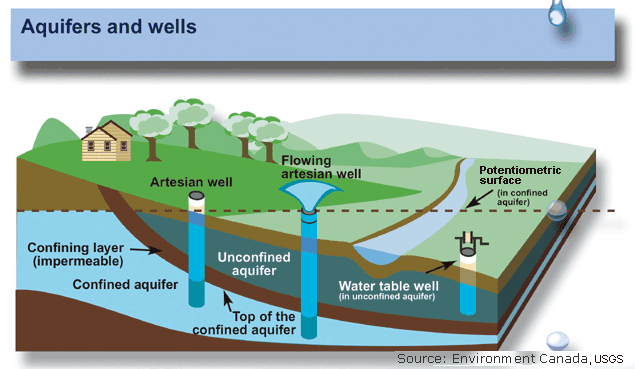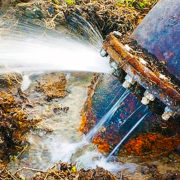EDITORIAL – Three Years After A Major Westside Water System Failure, County Audit Misses The Mark
In January 2017, a series of mysterious system wide failures led to a nearly 40% reduction in water delivery capacity by the Department of Water Supply (DWS) and to its West Hawaii customer base. Of the 13 wells which comprise the DWS Westside system, five (5) wells mysteriously failed within days of one another.
The loss of five deep water wells resulted in severe water use restrictions for both residents and businesses throughout North Kona region, and for more than a year.
A belated DWS county audit was delivered to the County Council this week, more than three years after the event. In the words of County auditor … “DWS should further develop and implement complete, detailed and written contingency plans by district as well as update their Continuity of Operations Plan.”
That’s It? As to the cause of the West Hawaii cascading well failures of 2017, the taxpayer-funded audit provided little insight. In fact, if not for the persistence of North Kona Councilwoman Karen Eoff and former Councilman Dru Kanuha in response to residents’ concerns, there might not have ever been an audit.
What exactly triggered a series of closely aligned pump failures occurring within days of one another?  Fundamental questions as to why this happened, and equally important, as to what can be done to prevent it from happening again have not been investigated or explained by officials.
Fundamental questions as to why this happened, and equally important, as to what can be done to prevent it from happening again have not been investigated or explained by officials.
The DWS system failures took the utility two years to recover, mostly though a series of work-around steps. To date, some of the damaged wells may remain possibly permanently out of service, beyond economic recovery.
The costly series of downed wells and reduced service capacity required extended periods of voluntary and threatened water rationing, with DWS water trucks supplementing down service areas — also all at ratepayers expense.
The absence of any reasonable explanation goes to the heart of DWS’ operations: a quasi-public /private organization without accountability to its ratepayers; beginning with operational oversight, and ending with its manager and chief engineer.
A CLOSER LOOK INTO CORRECTIVE DWS MEASURES NEEDED
What were the “lessons learned” that could prevent such failures in the future?
First, we must consider three fundamental and outstanding issues with DWS’s (Dept. of Water Supply) mission critical operation – reliably delivering water services to its customers: island residents, agriculture, and businesses:
- No Power, No Water — DWS has no power backup system in place for its pumping operations; DWS is totally dependent on HELCO (HECO) power to operate on a 24×7 basis. The most basic power back-up capacity (enabling continued operation in the likely event of power loss is absent from the DWS water delivery system). Service resiliency is not part of the utility’s management ethos. In the event of an extended power outage 8-18 hours, the DWS infrastructure begins to fail in water delivery, as pipeline storage tanks are emptied.
- A Culture of and Absence of Public Transparency — The loss of five Hawaii Island Westside service wells within less than a month (January 2017), has never been fully explained – coincidence, not likely. Questions that remain unanswered, including: what was the state of HELCO power delivered to DWS, and what was the state of power surge protection at the time of system failure, and at each of the five well sites. Is it true that all five well sites were wired to the same HELCO circuit? If yes, is there a link between the pump and equipment failures and the state of power delivery at the time of the incidents?
- No Incentive to Improve Resiliency, Efficiency, or Lower Costs — DWS is the largest single power consumer on Hawaii Island. They are HELCO’s number one customer, but delivering power through a fragile grid which is ready to fail with Hawaii Island’s next super storm (even after ratepayer-funded HELCO grid strengthening improvements of 2018). More than half of DWS’ operating cost is from electricity purchased from HELCO which is required to power its pumping network. Escalating HELCO power costs are quickly passed onto DWS ratepayer water bills (no questions asked). From the DWS’ perspective, the ratepayer money barrel appears bottomless.
There is a nine member Water Board (appointed by the Mayor) which is charged with public oversight of DWS operations. The board has historically failed to demonstrate much interest in representing ratepayer interests, rubber stamping rate increases, and failing to hold accountable DWS management. Rather than focusing on their fiduciary oversight responsibilities to improve resiliency, efficiency, and lower costs within DWS, the Board appears less concerned with such details.
- There is also an absence of imagination by the Water Board and DWS management when it comes to opportunities that can address inherent operating deficiencies within the utility, i.e., addressing the absence of power back-up and adequate power surge protection from the grid– both a cost of operation and service reliability issue.
- Failing to pursue self-generation powering opportunities (solar/wind) and pumped-storage; are missed opportunities which can significantly cut DWS operating costs, introduce sustainability, and will certainly add to overall operating resiliency.
All appears in short supply when it comes to public accountability from a water utility which is both essential to Hawaii Island life and the local economy.




Leave a Reply
Join the Community discussion now - your email address will not be published, remains secure and confidential. Mahalo.